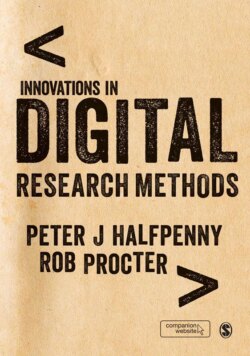Читать книгу Innovations in Digital Research Methods - Группа авторов - Страница 19
На сайте Литреса книга снята с продажи.
Chapter 4: Survey Methods: Challenges and Opportunities
ОглавлениеIn this chapter, Murphy considers the future for data collection and using survey methods in the context of new sources of digital social data and technical innovations in research methods and tools. He sets the scene by discussing current challenges for survey research, such as declining response rates in traditional face-to-face, telephone and mail surveys, alongside the opportunities that technical innovations provide for enhancing the quality and efficiency of survey research methods. Drawing on a selection of major social science surveys, Murphy offers examples that point toward the continuing importance of survey-based methods in the social sciences.
Murphy observes that, despite the proliferation of born digital data, recent years have nevertheless witnessed an explosion in the quantity and diversity of data generated through survey research. This has been facilitated by developments in e-Infrastructure, an example being the unprecedented opportunities for the recruitment and retention of respondents afforded by the public’s mass adoption of email and, subsequently, social networking sites. Similarly, survey researchers have benefited from the increasing availability of paradata, that is, data about survey transactions and interactions with respondents, which can be used to gain insights into their motivations and the meaning behind their responses. Such e-Infrastructure affordances have made significant advances in the capture, analysis and dissemination of survey data possible. They lead Murphy to argue that, contrary to predictions that new sources of data will make surveys redundant, they offer ways both to make surveys more effective tools and to meet the challenges that have threatened their value. For example, the availability of administrative data and methods for matching it with survey data hold great promise for minimizing respondent burden and cost. In a different vein, Murphy observes that virtual worlds, such as Second Life, offer new ways of conducting interview-based surveys.
Nevertheless, Murphy reminds us that social media brings new challenges, in particular, the problems of bias through samples of unknown representativeness, and quality assurance. The prospect of using social media as a substitute for traditional surveys – for example, the use of Twitter as a way of measuring public opinion through sentiment analysis – is often heralded as a sign of their imminent demise. Murphy, however, warns of the dangers of relying on such data where there is ‘… no standardization or check on the validity of the information being shared’. He argues, instead, for more research into the value of Twitter as a means to recruit respondents, citing as an example a recent study where it was used in diary data collection. Finally, Murphy discusses the potential of mobile devices for SMS-based survey delivery, noting its efficacy for administering them at predetermined times or in the context of specific events or – when used in conjunction with GPS – specific places.
Murphy’s conclusion is that survey methods are continuing to play a major role in social research, and pessimism about their survival is misplaced. This role, however, is increasingly being shaped by people’s use of communication technologies. Given the rapid pace of innovation of these technologies, the future for survey methods remains hard to predict.
